 W
WJohn Badger Bachelder was a portrait and landscape painter, lithographer, and photographer, but best known as the preeminent 19th-century historian of the Battle of Gettysburg in the American Civil War. He was a dominant factor in the preservation and memorialization of the Gettysburg Battlefield in the latter part of the century.
 W
WHenry Ward Beecher was an American Congregationalist clergyman, social reformer, and speaker, known for his support of the abolition of slavery, his emphasis on God's love, and his 1875 adultery trial. His rhetorical focus on Christ's love has influenced mainstream Christianity to this day.
 W
WFrank Henry Temple Bellew, American artist, illustrator, and cartoonist.
 W
WVictor Gustav Bloede I, was a chemist and manufacturer of chemicals, president of the Victor G. Bloede Company, and businessman.
 W
WThomas Morris Chester was an American war correspondent, lawyer and soldier who took part in the American Civil War.
 W
WSarah Platt Doremus was an American philanthropist.
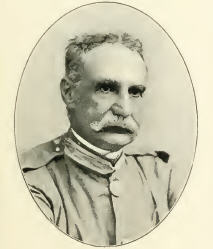 W
WJames Forney was an American officer serving in the United States Marine Corps during the American Civil War. He was approved to receive the Marine Corps Brevet Medal for bravery but died before it could be presented.
 W
WGeneral Sir Arthur James Lyon Fremantle was a British Army officer and a notable British witness to the Battle of Gettysburg during the American Civil War. Whilst holding the rank of "Captain and Lieutenant Colonel" he spent three months in North America, travelling through parts of the Confederate States of America and the Union. Contrary to popular belief, Colonel Fremantle was not an official representative of the United Kingdom; instead, he was something of a tourist.
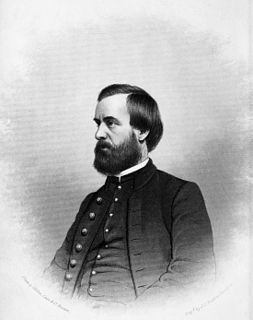 W
WArthur Buckminster Fuller was a Unitarian clergyman of the United States.
 W
WAlexander Gardner was a Scottish photographer who immigrated to the United States in 1856, where he began to work full-time in that profession. He is best known for his photographs of the American Civil War, U.S. President Abraham Lincoln, and the execution of the conspirators to Lincoln's assassination.
 W
WGiuseppe Maria Garibaldi was an Italian general, patriot and republican. He contributed to the Italian unification and the creation of the Kingdom of Italy. He is considered to be one of the greatest generals of modern times and one of Italy's "fathers of the fatherland", along with Camillo Benso, Count of Cavour, Victor Emmanuel II of Italy and Giuseppe Mazzini. Garibaldi is also known as the "Hero of the Two Worlds" because of his military enterprises in South America and Europe.
 W
WBurton Norvell Harrison, was a lawyer, American Democratic politician, and private secretary to Confederate States of America president Jefferson Davis.
 W
WCharles Camille Heidsieck (1822–1893) was a French Champagne merchant who founded the Champagne firm Charles Heidsieck in 1851. He is credited with popularizing Champagne in the United States and was known as "Champagne Charlie" during his stay.
 W
WJulius Erasmus Hilgard was a German-American engineer.
 W
WAugustus Charles Hobart-Hampden was an English-born Ottoman admiral.
 W
WThomas Marshall Howe was a Whig member of the U.S. House of Representatives from Pennsylvania. He was a Financier, Statesman, Manufacturer, and Philanthropist. He was considered the leading citizen of Pittsburgh of his day.
 W
WTheodore Kaufmann was an artist who worked mostly in the United States.
 W
WWalter Kittredge, was a famous musician during the American Civil War.
 W
WEdward Chalmers Leavitt (1842–1904), a native of Providence, Rhode Island, was an early New England painter said to be the most renowned still life painter of his day in Providence, although today he is largely forgotten.
 W
WFrank Leslie was an English-born American engraver, illustrator, and publisher of family periodicals.
 W
WThaddeus Sobieski Constantine Lowe, also known as Professor T. S. C. Lowe, was an American Civil War aeronaut, scientist and inventor, mostly self-educated in the fields of chemistry, meteorology, and aeronautics, and the father of military aerial reconnaissance in the United States. By the late 1850s he was well known for his advanced theories in the meteorological sciences as well as his balloon building. Among his aspirations were plans for a transatlantic flight.
 W
WDennis Hart Mahan [məˈhæn] was a noted American military theorist, civil engineer and professor at the United States Military Academy at West Point from 1824-1871. He was the father of American naval historian and theorist Rear Admiral Alfred Thayer Mahan. Of his other four children, his son Frederick August Mahan also graduated from West Point in 1867.
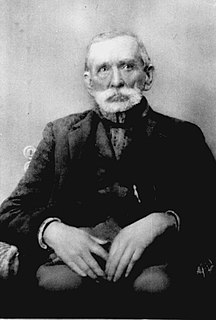 W
WRandolph "Randall" or "Ole Ran'l" McCoy was the patriarch of the McCoy clan involved in the infamous American Hatfield–McCoy feud. He was born the fourth of thirteen children to Daniel McCoy (1790–1885) and Margaret Taylor McCoy (1800–1868) and lived mostly on the Kentucky side of Tug Fork, a tributary of the Big Sandy River.
 W
WJoseph Medill was a Canadian-American newspaper editor, publisher, and Republican Party politician. He was co-owner and managing editor of the Chicago Tribune, and he was Mayor of Chicago from after the Great Chicago Fire of 1871 until 1873.
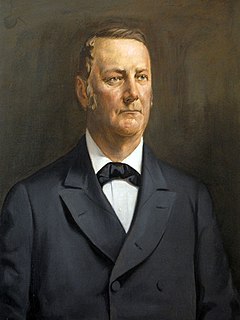 W
WJohn Merryman of Baltimore County, Maryland, was arrested in May 1861 and held prisoner in Fort McHenry in Baltimore and was the petitioner in the case "Ex parte Merryman" which was one of the best known habeas corpus cases of the American Civil War (1861-1865). Merryman was arrested for his involvement in the mob in Baltimore, specifically for his leadership in the destruction of telegraph lines, but was not charged, a right normally ensured by the writ of habeas corpus. The case was taken up by the federal circuit court and its current presiding judge who happened to be Chief Justice Roger B. Taney, a Democrat-leaning Marylander. The reading of Article 1, Section 9 of the Constitution was in question. Taney believed that the phrase “when in cases of rebellion or invasion the public safety may require it” applied solely to Congress because of its location in Article 1. In Ex Parte Milligan, Chief Justice Taney writes, “If the high power over the liberty of the citizens now claimed was intended to be conferred on the President, it would undoubtedly be found in plain words in this article … He certainly does not faithfully execute the laws if he takes upon himself legislative power by suspending the writ of habeas corpus.” Lincoln asserted that his "war powers" gave him authority to act on this power to preserve the Union, especially since Congress could not be in session to suspend the writ. Lincoln largely ignored Taney's ruling, asking Congress when they reconvened for a special session on July 4, 1861, “Are all the laws, but one, to go unexecuted, and the government itself go to pieces, lest that one be violated?” Had the destruction of public property been allowed to continue in Maryland, Lincoln would have had to fight an insurrection in the north as well as the seceding states' armies. Thus, he concludes that suspending the writ of habeas corpus was essential to preserving the government. The executive branch could not enforce laws if people were damaging its infrastructure. The case never reached the Supreme Court, partly because in 1861 Congress passed a law which "approved and in all respects legalized and made valid ... all the acts, proclamations, and orders of the President of the United States respecting the army and navy ... as if they had been done under the previous express authority and direction of the Congress."
 W
WHenry Mitchell was an American oceanographer and hydrographer.
 W
WJohn Mitchel was an Irish nationalist activist, author, and political journalist. Born in Camnish, near Dungiven, County Londonderry and reared in Newry, he became a leading member of both Young Ireland and the Irish Confederation. He was transported to Van Diemen's Land but later escaped to the United States in the 1850s, he became a pro-slavery editorial voice. Mitchel supported the Confederate States of America during the American Civil War, and two of his sons died fighting for the Confederate cause. He was elected to the House of Commons of the United Kingdom in 1875, but was disqualified because he was a convicted felon. His Jail Journal is one of Irish nationalism's most famous texts.
 W
WThomas Nast was a German-born American caricaturist and editorial cartoonist often considered to be the "Father of the American Cartoon". He was a critic of Democratic Representative "Boss" Tweed and the Tammany Hall Democratic party political machine. Among his notable works were the creation of the modern version of Santa Claus and the political symbol of the elephant for the Republican Party (GOP). Contrary to popular belief, Nast did not create Uncle Sam, Columbia, or the Democratic donkey, though he popularized those symbols by his artwork. Nast was associated with the magazine Harper's Weekly from 1859 to 1860 and from 1862 until 1886.
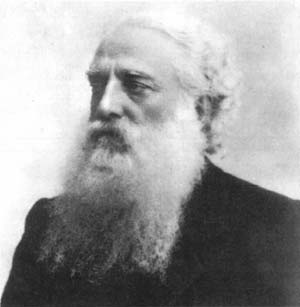 W
WColonel Henry Steel Olcott was an American military officer, journalist, lawyer and the co-founder and first President of the Theosophical Society.
 W
WFrederick Law Olmsted was an American landscape architect, journalist, social critic, and public administrator. He is popularly considered to be the father of American landscape architecture. Olmsted was famous for co-designing many well-known urban parks with his senior partner Calvert Vaux. One of Olmstead's early works included designing the Walnut Hill Park in New Britain, Connecticut. His later efforts included Central Park and Prospect Park in New York City and Cadwalader Park in Trenton. He headed the pre-eminent landscape architecture and planning consultancy of late nineteenth-century America, which was carried on and expanded by his sons, Frederick Jr and John C, under the name Olmsted Brothers.
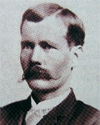 W
WGlenn Reynolds was an American sheriff, cowboy, and militiaman of the Old West, remembered for his death during the Kelvin Grade Massacre, in Arizona Territory, when a group of Apache renegades escaped from his custody.
 W
WLewis Henry Steiner was a United States physician and librarian.
 W
WRobert King Stone was a 19th-century professor at Columbian College Medical School and was considered "the dean of the Washington medical community".
 W
WTheodore Ruggles Timby is credited as the inventor of the revolving gun turret that was used on the USS Monitor, the ironclad warship that fought in the American Civil War. He was born in Dutchess County, New York on April 5, 1819. Early in life, at the age of 16, he invented a method for raising ships out of the water for repairs by sinking a water-filled box beneath it, then forcing the water out through pumps in order to raise the ship.
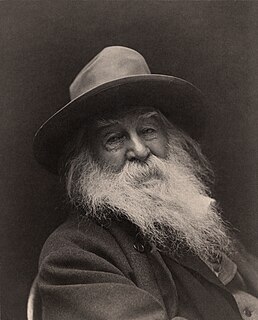 W
WWalt Whitman was an American poet, essayist, and journalist. A humanist, he was a part of the transition between transcendentalism and realism, incorporating both views in his works. Whitman is among the most influential poets in the American canon, often called the father of free verse. His work was controversial in its time, particularly his poetry collection Leaves of Grass, which was described as obscene for its overt sensuality. Whitman's own life came under scrutiny for his presumed homosexuality.
 W
WJohn Wood was the U.S. government’s first official photographer. He took the photograph of Lincoln's First Inauguration as well as the inauguration of James Buchanan in 1857, thought to be the first known photograph of a Presidential inauguration. Wood made the 1857 exposure in four seconds.
 W
WHenry Clay Work was an American composer and songwriter.
 W
WFerdinand Adolf Heinrich August Graf von Zeppelin was a German general and later inventor of the Zeppelin rigid airships; he founded the company Luftschiffbau Zeppelin.
 W
W